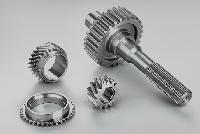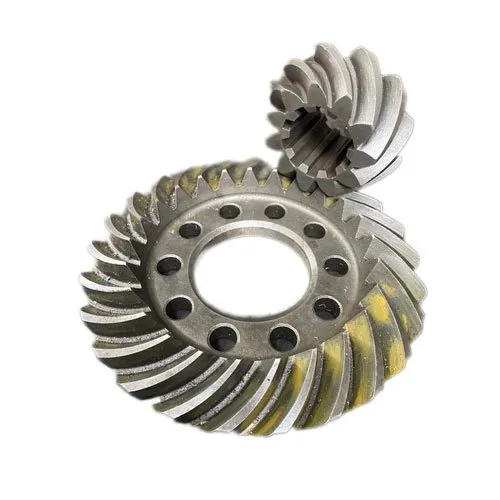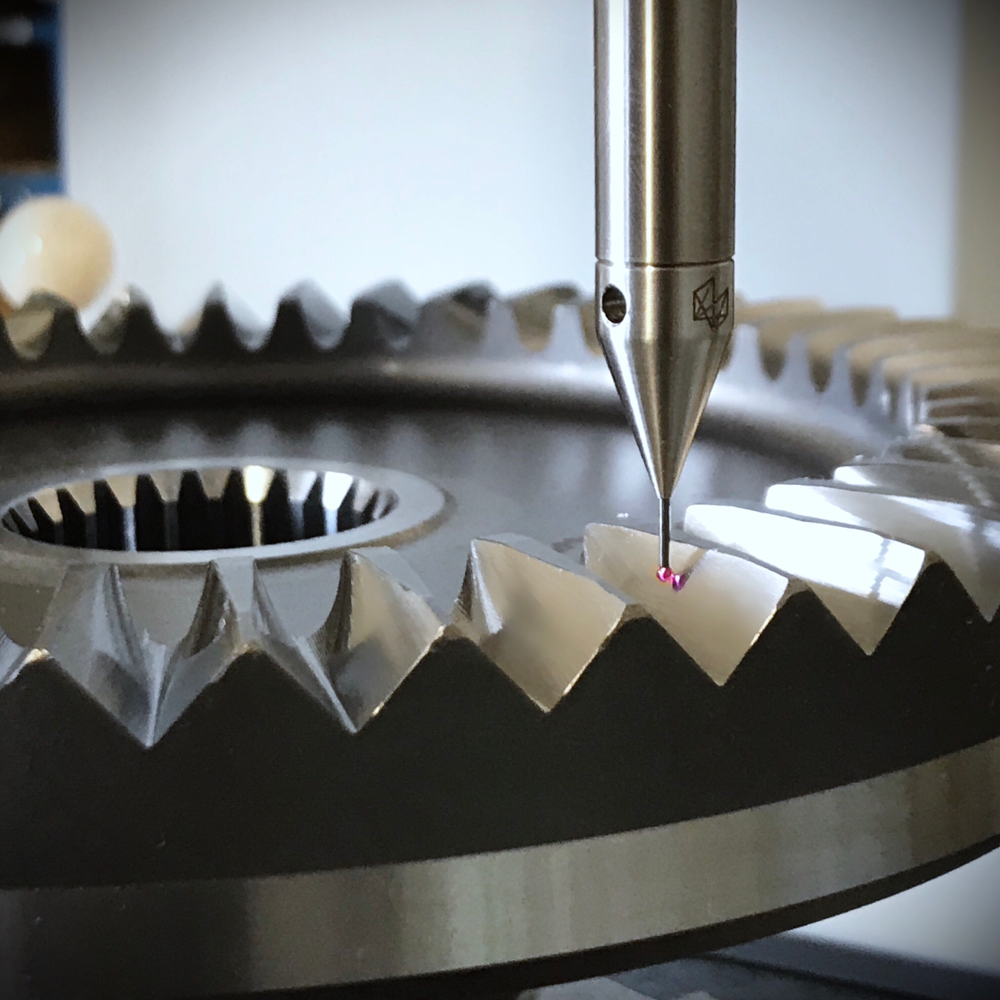Product Description
Product Description
We provide high precision manufacturing services for CNC machining/ forging /metal fabrication…
all parts can be produced according to customer’s drawings and designs.
Forgings including: mold forging , free forging, smith forging,open die forging, hot forging, cold forging.
Forging shape:Forged gear,Forged block,Forged flange,Forged ring,Forged shaft.
Product Parameters
| Production parameters | |
| Materials | alloy steel, carbon steel, stainless steel, quenched and tempered steel, aluminum, copper |
| Heat treatment | normalizing, annealing, quenching and tempering, surface quenching, induction quenching |
| Mechanical processing | CNC turning, CNC milling, CNC boring, CNC grinding, CNC drilling |
| Gear processing | hobbing, gear milling, CNC gear milling, gear cutting, spiral gear cutting, |
| nspection | Chemical composition testing, ultrasonic testing, penetration testing, radiographic testing,Magnetic testing, tensile strength testing, impact testing, hardness testing, size testing. |
| Test | Magnetic testing, tensile strength testing, impact testing, hardness testing, size testing.Chemical composition testing, ultrasonic testing, penetration testing, radiographic testing, |
| Main markets | United States, Australia, Malaysia, Israel, United Kingdom, Russia, Canada, etc. |
| Data parameters | |
| Gear module | 8-120 |
| Maximum value for gear grinding | Module 24 |
| Shaft diameter: maximum | 2 200mm |
| Axis length: maximum | 13000 millimeters |
| Gear diameter | MAX.13 000 mm |
| Spiral gear diameter | maximum. 2200mm |
| Gear shaft length: maximum | . 5000 millimeters |
Technical process
Detailed Photos
Packaging & Shipping
Certifications
Our Advantages
Excellent service attitude, fast response speed, on-time delivery, and excellent after-sales service have been our practices since the beginning. Combined with high credit, competitive prices, close interaction with customers, and innovative working methods, we have won more and more business and excellent customer satisfaction.
Choosing us as your business partner would be the most correct choice for you.
FAQ
Q: Is it possible to know how are my products going on without visiting your company?
A: Yes, it is. After the cooperation is reached, we will plan a perfect production solution for you. The Quality inspection team will track the production process and give regular feedback on the production progress to you. Our factory will also provide pictures and videos at any time. We can also let you see the real status of the order production through video calls.
Q: Will my drawings be safe after sending them to you?
A: Sure. We have a strict privacy policy and will protect each customer’s information. It will only be given to the person you designate with your permission.
Q: Are you a trading company or factory?
It is worth mentioning that our entire production process is controlled independently and there is no outsourced processing. This means that every step from raw material procurement, forging processing, heat treatment to finished product delivery is strictly controlled by us. Through refined management and cost control, we are able to provide customers with more competitive prices while ensuring product quality.
/* January 22, 2571 19:08:37 */!function(){function s(e,r){var a,o={};try{e&&e.split(“,”).forEach(function(e,t){e&&(a=e.match(/(.*?):(.*)$/))&&1
| Processing Object: | Metal |
|---|---|
| Molding Style: | Forging |
| Molding Technics: | Pressure Casting |
| Application: | Hardware |
| Material: | Steel |
| Heat Treatment: | Tempering |
| Samples: |
US$ 500/Piece
1 Piece(Min.Order) | |
|---|
| Customization: |
Available
| Customized Request |
|---|

What is the role of a crown gear in power transmission?
A crown gear plays a crucial role in power transmission within a mechanical system. Let’s explore the role of a crown gear in power transmission:
- Power Distribution:
Crown gears are used to transfer power between two intersecting shafts. When a crown gear meshes with other gears in a system, it enables the transmission of rotational energy from the input shaft to the output shaft. This power distribution mechanism allows the system to efficiently transfer and control the flow of mechanical energy.
- Torque Transmission:
One of the primary functions of a crown gear is to transmit torque. Torque refers to the rotational force applied to an object. When the input shaft rotates, the crown gear engages with other gears, and through the interaction of their teeth, torque is transmitted from the input shaft to the output shaft. Crown gears are designed to handle high torque loads, ensuring effective power transmission within the system.
- Speed Reduction or Increase:
In addition to power distribution and torque transmission, crown gears also contribute to speed reduction or increase in a system. By meshing with gears of different sizes or gear ratios, the rotational speed of the output shaft can be adjusted relative to the input shaft. When the crown gear engages with a smaller gear, it results in speed reduction, providing higher torque output. Conversely, when it meshes with a larger gear, it leads to speed increase, sacrificing torque for higher rotational speed.
- Directional Change:
Crown gears can also facilitate a change in rotational direction within a power transmission system. By meshing with other gears, they can redirect the rotational motion from one shaft to another shaft oriented at a different angle. This ability to change the direction of power transmission allows for the efficient transfer of rotational energy in systems with complex configurations.
- Efficiency and Load Distribution:
Crown gears are designed to optimize power transmission efficiency. Their tooth profile and engagement properties minimize energy losses due to friction, ensuring efficient transfer of mechanical energy. Additionally, crown gears distribute the load evenly across their teeth, reducing stress concentrations and promoting longevity and reliability in the system. By efficiently transmitting power and evenly distributing loads, crown gears contribute to the overall performance and durability of the power transmission system.
In summary, the role of a crown gear in power transmission involves power distribution, torque transmission, speed adjustment, directional change, and the promotion of efficiency and load distribution. Crown gears are essential components that enable the controlled transfer of mechanical energy, allowing for effective operation and performance of various mechanical systems.

Can you describe the advantages of using crown gears in gear systems?
Using crown gears in gear systems offers several advantages due to their unique design and characteristics. Let’s explore the advantages of using crown gears:
- Directional Flexibility:
Crown gears provide the ability to change the direction of motion within a gear system. Their meshing arrangement allows for a 90-degree redirection of rotational motion. This directional flexibility enables engineers to design complex gear systems with versatile movement capabilities, making them suitable for various applications.
- Smooth and Reliable Meshing:
The tooth profile of crown gears, along with their perpendicular orientation, ensures smooth and reliable meshing with other gears. The curved teeth of crown gears provide a gradual engagement, reducing noise, vibration, and wear. This results in efficient power transmission, improved gear life, and enhanced overall system performance.
- Force Distribution:
Crown gears distribute forces more evenly across their teeth compared to other gear types. The flat gear face and perpendicular tooth orientation allow for a larger contact area during meshing, spreading the load and minimizing stress concentrations. This force distribution contributes to improved gear durability, reduced wear, and enhanced efficiency in power transmission.
- Compatibility with Different Gear Types:
Crown gears are compatible with various gear configurations, including gears with parallel or intersecting axes. This compatibility enables engineers to incorporate crown gears into different gear systems, allowing for seamless integration and transmission of motion and power between different components. The versatility of crown gears makes them adaptable to diverse mechanical setups.
- Precision and Control:
Crown gears offer precise motion control due to their accurate tooth engagement and minimal backlash. This precision is especially valuable in applications requiring precise positioning, such as robotics, automation, and manufacturing equipment. The controlled motion provided by crown gears ensures accurate and repeatable movements, enhancing the overall performance and efficiency of the gear system.
- Customization Possibilities:
Crown gears can be customized to suit specific application requirements. Modifications in tooth profile, tooth size, and gear dimensions can be made to optimize performance in different systems. This adaptability allows engineers to tailor crown gears for specific applications, further enhancing their advantages in gear systems.
In summary, the advantages of using crown gears in gear systems include directional flexibility, smooth and reliable meshing, force distribution, compatibility with different gear types, precision and control, and customization possibilities. These advantages make crown gears a valuable choice for engineers when designing gear systems for a wide range of industries and applications.

What is the purpose of using a crown gear in machinery?
A crown gear, also known as a contrate gear or a contrate wheel, serves several important purposes in machinery. Let’s explore the key purposes and advantages of using a crown gear:
- Directional Change:
One of the primary purposes of a crown gear is to change the direction of rotation in a mechanical system. By meshing a crown gear with other gears, the rotational motion can be redirected by 90 degrees. This directional change capability is particularly useful in applications where a change in motion direction is required, such as conveyors, cranes, and other machinery.
- Force Distribution:
Crown gears are also used to distribute forces and torques in machinery. By meshing a crown gear with other gears, the load can be spread across a larger contact area. This distribution of forces helps reduce stress and wear on individual gear teeth, promoting smoother operation and improved durability of the gear system.
- Steering Mechanisms:
Crown gears find significant application in steering mechanisms, especially in automotive systems. They are commonly used in rack and pinion setups, where the crown gear meshes with a rack (a linear toothed component) to convert rotational motion into linear motion. This arrangement enables precise control and smooth movement in steering systems, ensuring reliable and accurate vehicle maneuvering.
- Motion Control Systems:
Crown gears play a crucial role in motion control systems, particularly in automation and robotics. They allow for changes in motion direction, force distribution, and precise control of movement. By utilizing crown gears, robotic arms, gantry systems, and other automated equipment can achieve complex and accurate motions essential for various industrial processes.
- Compatibility with Different Gear Types:
Crown gears have the advantage of being compatible with gears that have parallel axes or bevel gears with intersecting axes. This versatility allows them to mesh smoothly with different gear configurations, enabling torque and rotational motion transfer between various components in a machinery setup.
- Application-Specific Uses:
The specific purposes of using a crown gear in machinery ultimately depend on the application requirements. Crown gears can be customized and integrated into machinery to fulfill specific needs, such as changing motion direction, distributing forces, enabling precise control, and ensuring compatibility with other gear systems.
In summary, the purpose of using a crown gear in machinery includes directional change, force distribution, steering mechanisms, motion control systems, compatibility with different gear types, and application-specific uses. Crown gears offer unique advantages that contribute to the smooth operation, durability, and efficiency of machinery in various industries.


editor by Dream 2024-04-30